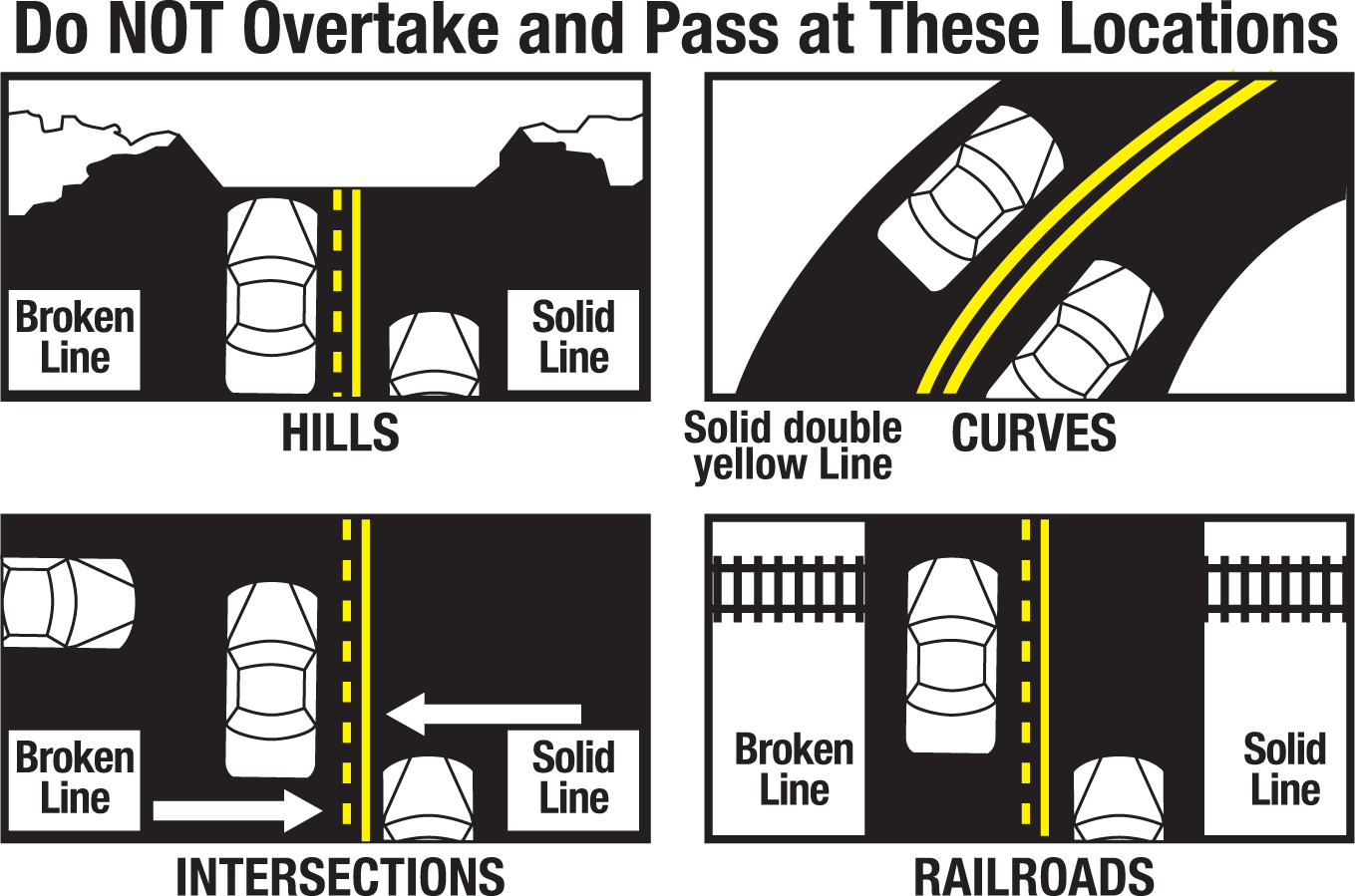Florida Driver Handbook: Passing
Order now5. Driving Safety
- 5.1. Distracted Drivers
- 5.2. Getting Ready to Drive
- 5.3. Defensive Driving
- 5.4. Driving Safety for Mature Drivers - Tips to Help You Drive Safer .... Longer
- 5.5. When You Back Up
- 5.6. Avoiding Rear-end Collisions
- 5.7. Emotions
- 5.8. Basic Driver Improvement
- 5.9. Safety Belts
- 5.10. Protecting Children
- 5.11. Speed Limits
- 5.12. Following Officer's and Fireman's Instructions
- 5.13. Crossing Intersections
- 5.14. Right-of-Way
- 5.15. Stop Signs
- 5.16. Open Intersections
- 5.17. Roundabouts
- 5.18. Driveways
- 5.19. Emergency Vehicles
- 5.20. Making Turns
- 5.21. Turnabout (Three-Point Turn)
- 5.22. Turn Signals and Emergency Signals
- 5.23. Traffic Lanes
- 5.24. Blind Spots
- 5.25. Passing
- 5.26. Minimum Safe Following Distances
- 5.27. Parking
- 5.28. Expressway Driving
- 5.29. Night Driving
- 5.30. Animals
- 5.31. Reduced Visibility
- 5.32. Handling Emergencies
- 5.33. First Aid
- Stay a safe distance behind the vehicle you want to pass. The closer you get to the vehicle you want to pass, the less you can see ahead. This is especially true when passing trucks, trailers, and other large vehicles.
- Before you pull out to pass, check your blind spots and make sure that you have plenty of time and room to pass.
- On a two-lane road, tap your horn, or at night blink your headlights to let the other driver know you are passing.
- Give your signal before you move into the left lane. Turn signals are required when changing lanes. Be sure that the drivers around you have time to see your signal BEFORE you move.
- Do not return to the right side of the road until you can see the tires of the vehicle you passed in your rearview mirror.
- You must return to the right side of the road before coming within 200 feet of any vehicle coming from the opposite direction.
- Passing on the right is only legal when there are two or more lanes of traffic moving in the same direction or the vehicle you are passing is making a left turn. Pulling off the roadway to pass on the right is against the law.

Other parked or stopped vehicles can create vision blockage obscuring the presence of pedestrians crossing the road or cyclists sharing the roadway. If another vehicle has stopped in an adjacent lane in the same direction of travel, be observant in case the other motorist has stopped for a pedestrian or disabled vehicle.
5.25.1 - Being Passed
- The driver of the car being passed must not increase speed until the pass is complete.
- Help other drivers pass you safely. Move to the right side of your lane to give them more room and a better view of the road ahead.
5.25.2 - When You May Not Pass
You may not pass on a two-lane road with traffic moving in opposite directions under these conditions:
- Where you see a "DO NOT PASS" or "NO PASSING ZONE" sign. The prohibition of passing in a no-Passing zone does not apply when an obstruction exists making it necessary to drive to the left of the center of the highway [s 316.0875(3) F.S.]. Thus, when a cyclist is traveling so slowly as to constitute an "obstruction," a motorist may cross the center line in a no-passing zone if the way is clear to do so, i.e., when it can be seen that oncoming traffic is far enough away the pass may be completed before coming within 200 feet of an oncoming vehicle.

- Where a solid yellow line is painted on your side of the center line.
- On hills or curves, and at intersections.
- Within 100 feet of a bridge, viaduct, tunnel, or railroad crossing. Violators may be arrested or issued a ticket.
Check out our Customer Reviews!


